Philosophy of Religion
Chapter 2. Religions of the World
Section 7 . Shintoism
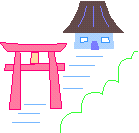
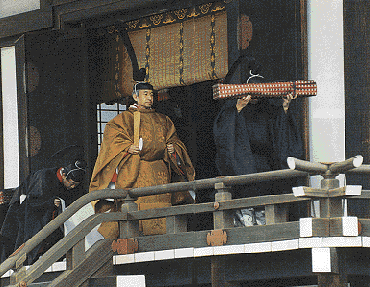
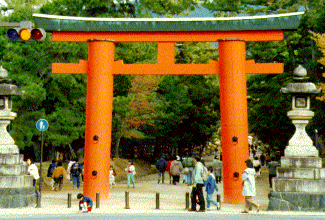
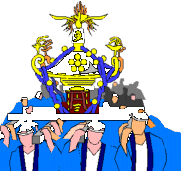
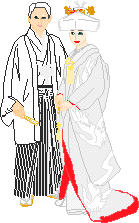
· THE ABSOLUTE: what do the believers hold as most important? What is the ultimate source of value and significance? For many, but not all religions, this is given some form of agency and portrayed as a deity (deities). It might be a concept or ideal as well as a figure.
· THE WORLD: What does the belief system say about the world? Its origin? its relation to the Absolute? Its future?
· HUMANS: Where do they come from? How do they fit into the general scheme of things? What is their destiny or future?
· THE PROBLEM FOR HUMANS: What is the principle problem for humans that they must learn to deal with and solve?
· THE SOLUTION FOR HUMANS: How are humans to solve or overcome the fundamental problems ?
· COMMUNITY AND ETHICS: What is the moral code as promulgated by the religion? What is the idea of community and how humans are to live with one another?
· AN INTERPRETATION OF HISTORY: Does the religion offer an explanation for events occurring in time? Is there a single linear history with time coming to an end or does time recycle? Is there a plan working itself out in time and detectable in the events of history?
· RITUALS AND SYMBOLS: What are the major rituals, holy days, garments, ceremonies and symbols?
· LIFE AFTER DEATH: What is the explanation given for what occurs after death? Does he religion support a belief in souls or spirits which survive the death of the body? What is the belief in what occurs afterwards? Is there a resurrection of the body? Reincarnation? Dissolution? Extinction?
·
RELATIONSHIP TO OTHER
RELIGIONS: What is the prescribed manner in which believers are to regard
other religions and the followers of other religions?
**********************************************************
For those who wish to listen to information on the world's
religions here is a listing of PODCASTS on RELIGIONS by Cynthia
Eller.
************************************************************
If you have iTunes on your computer just click and you will be led to the
listings.
http://phobos.apple.com/WebObjects/MZStore.woa/wa/viewPodcast?id=117762189&s=143441
Here is a link to the site for the textbook REVEALING WORLD RELIGIONS
related to which these podcasts were made.
http://thinkingstrings.com/Product/WR/index.html
I. Introduction
Shinto (Japanese, "the way of the gods"), Japanese cult and religion, originating in prehistoric times, and occupying an important national position for long periods in the history of Japan, particularly in recent times. During its early period, the body of religious belief and practice called Shinto was without a name and had no fixed dogma, moral precepts, or sacred writings. Worship centered on a vast pantheon of spirits, or kami, mainly divinities personifying aspects of the natural world, such as the sky, the earth, heavenly bodies, and storms. Rites included prayers of thanksgiving; offerings of valuables, such as swords and armor and, especially, cloth; and ablutionary purification from crime and defilement.
II. Early History
In the late 6th century AD the name Shinto was created for the native religion to distinguish it from Buddhism and Confucianism, which had been introduced from China. Shinto was rapidly overshadowed by Buddhism, and the native gods were generally regarded as manifestations of Buddha in a previous state of existence. Buddhist priests became the custodians of Shinto shrines and introduced their own ornaments, images, and ritual. At the end of the 8th and the beginning of the 9th centuries, the celebrated Japanese teacher Kukai, or (posthumously) Kobo Daishi, established a doctrine uniting Buddhism and Shinto under the name of Ryobu Shinto (Japanese, "the Shinto of two kinds"). In the new religion, Buddhism dominated Shinto, and elements were adopted from Confucianism. The ancient practice of Shinto proper virtually disappeared and was maintained only at a few great shrines and in the imperial palace, although the emperors themselves had become Buddhists. The distinctively Shinto priests became fortune-tellers and magicians.
Beginning in the 18th century, Shinto was revived as an important national religion through the writings and teachings of a succession of notable scholars, including Mabuchi, Motoori Norinaga, and Hirata Atsutane. Motivated by nationalistic sentiments that took the form of reverence for Japanese antiquity and hatred for ideas and practices of foreign origin, these men prepared the way for the disestablishment of Buddhism and the adoption of Shinto as the state religion. In 1867 the shogunate was overthrown, and the emperor was restored to the head of the government. According to revived Shinto doctrine, the sovereignty of the emperor was exercised by divine right through his reputed descent from the sun goddess Amaterasu Omikami, who is considered the founder of the Japanese nation. Related beliefs included the doctrines that the Japanese were superior to other peoples because of their descent from the gods, and that the emperor was destined to rule over the entire world. Until the defeat of Japan in World War II, these beliefs were of the utmost importance in assuring popular support for the military expansion of the Japanese Empire.III. Contemporary Shinto
Before 1946 Shinto took two forms: State, or Shrine, Shinto, a patriotic nationalistic cult, identified with and financially supported by the imperial Government; and Sectarian Shinto, a general term for a number of sects founded by private persons and based on various interpretations of traditional Shinto. State Shinto, as the official government cult, theoretically embodied the religious beliefs of the entire Japanese people, and the number of its adherents was counted as the total population of the empire. The cult centered on a great profusion of shrines in all parts of the country, ranging from small wayside chapels commemorating local spirits and families to great national sanctuaries, such as the Yasukuni Shrine, Tokyo, dedicated to the spirits of soldiers who had died in battle for Japan. In 1946, during the American occupation of Japan following World War II, the cult was completely separated from the state by order of General Douglas MacArthur, supreme commander for the Allied powers. Government financial support of State Shinto was eliminated, the former practice of teaching cult doctrines in the schools was abolished, and the use of Shinto symbols for nationalistic purposes was forbidden. At the same time the emperor issued a statement renouncing all claims to divinity.
Sectarian Shinto, a religion of the same status as Buddhism and Christianity, was unaffected by these changes. At the present time it comprises 13 major and numerous minor sects. The principal sects are divided into 5 main groups: those that continue with little modification the traditions of ancient Shinto; those that emphasize adherence to Confucian ethics; those that are predominantly devoted to faith healing; those that practice the worship of mountains; and those that are primarily devoted to purification rites. In the early 1990s more than 110 million Japanese participated in the various Shinto sects, but those who professed Shinto as their sole or major religion numbered only about 3.4 million. The Shinto sects have approximately 101,000 priests and about 81,000 shrines. One of the most authoritative works on the subject is Shinto: The Way of Japan (1965) by the American educator and clergyman Floyd H. Ross.
| Special thanks to the Microsoft Corporation for their contribution to our site. The information above came from Microsoft Encarta. Here is a hyperlink to the Microsoft Encarta home page. http://www.encarta.msn.com |
Basic Terms of
Shinto - Explanation of fundamentals of Shinto.
| | Futahashira
Shrine - Located in Miyagi Prefecture. Festivals, history, Priest
biography.
| | The "Interi"
Shinto Homepage - An introduction to Interi Shintoism. It includes
various topics of importance to the person seeking an understanding
life and death.
| | | | Jinja & Shinto - A
site from Jinja Online Network League.
| | Study
Guide: Shinto - A short and basic page about shintoism. | | Basic Information: http://www.asahi-net.or.jp/~QM9T-KNDU/shintoism.htm | | | |
Images: http://www.trincoll.edu/zines/tj/tj4.4.96/articles/cover.html
Shrines: http://www.japan-guide.com/e/e2059.html
Festivals: http://www.japan-guide.com/e/e2063.html
SACRED TEXTS http://www.sacred-texts.com/shi/index.htm
Proceed to the next section by clicking here> next
© Copyright Philip A. Pecorino 2001. All Rights reserved.
Web Surfer's Caveat: These are class notes, intended to comment on readings and amplify class discussion. They should be read as such. They are not intended for publication or general distribution.